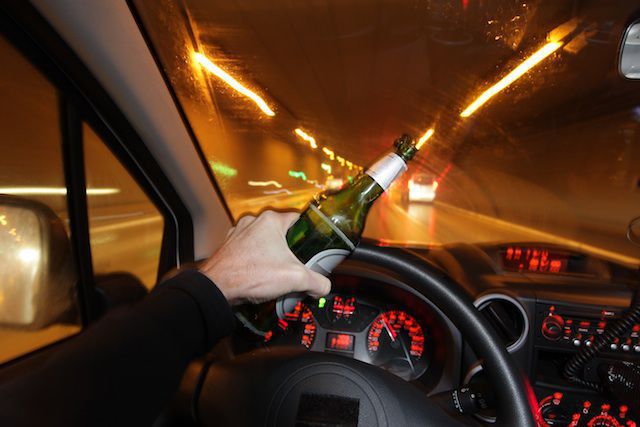 Sometimes you have to laugh.
Sometimes you have to laugh.
Even as a personal injury and wrongful death attorney who has represented victims of drunk drivers since the mid-1980s, I still chuckle when remembering the story about a man who was found passed out drunk and behind the wheel of a pickup truck with its motor running in the parking lot of a county jail. The guy was even cradling an open liquor bottle when sheriff’s deputies spotted him.
Picturing the man stumbling across the 20 feet that separated the front seat of his deadly weapon and the entrance to the county lockup brings a smile to my face. But it’s more a grim rictus than an expression of mirth. I never block out the tragedy of what might have happened.
LEARN MORE
- We Sue Drunk Drivers
- Five Ways You Can Prevent Drunk Driving
- Binge Drinking and Drunk Driving Crashes in Virginia
There is nothing funny about driving under the influence of alcohol or drugs. No matter how many movies and TV shows lean on the tired trope to score cheap laughs from near-misses and bloodless slapstick, real-life intoxicated drivers injure and kill thousands of people each year. In Virginia alone during 2019, 264 people died and 4,402 people went to hospitals with injuries after crashes involving one or more drunk drivers.
The Problem With Driving While Drunk
Consuming alcohol dulls every physical and mental capacity that is required to operate a motor vehicle safely. Researchers have extensively documented how even a single alcoholic beverage—a 12-ounce beer, 4 ounces of wine or a standard shot of liquor—negatively affects judgement, visual acuity, color vision and reaction time.
To quote a passage from a driver training manual endorsed by the National Highway Traffic Safety Administration (NHTSA),
Alcohol and certain types of drugs can blur your vision, slow your ability to focus and cause double vision. Your vision helps you to determine how far away an object is and the object’s relationship to your path of travel. Alcohol and other impairing drugs reduce the ability to judge distance, speed and the movement of other vehicles. With increasing impairment, you could drift across the centerline, wander from lane to lane, or even run off the roadway. Vision is affected for all drivers at a blood alcohol concentration (BAC) as low as .02 g/dl.
NHTSA has also found the drunk drivers account for a high percentage of fatal wrong-way collisions. That is not surprising since a majority of people who reach a blood alcohol concentration of .08 experience reductions in their abilities to concentrate, form short-term memories, control a vehicle’s speed, and process information such as traffic signals, lane lines and distances between cars.
Consider this story. In one of our recent drunk driving cases, the at-fault driver initially surrendered his keys to one of his friends who took them both to a restaurant for dinner. After arriving and being told it would take some time to be served, the man who injured our clients decided he did not want to wait.
Without announcing anything to friends and family members who had met him at the restaurant, the man slipped his extra key out of his wallet, got behind the wheel of his pickup truck, took off and hit the vehicle carrying our clients head on. The man and woman we represented suffered serious injuries. When we eventually deposed this defendant and asked him why he did it, he grudgingly admitted that it was stupid and he was sorry. He even admitted that he could have killed someone, including our clients.
No one is safe from drivers who are impaired by alcohol. Drunk drivers routinely mow down pedestrians, run off the road in construction zones, cross interstate medians, ram bike riders from behind and crash through the walls of homes and businesses. So, yes, allow yourself to enjoy knowing that at least one potential killer foiled his own wrongdoing by trying to sleep it off right outside a jail. But recognize, too, that the alternative was deadly serious in the most literal way.
EJL